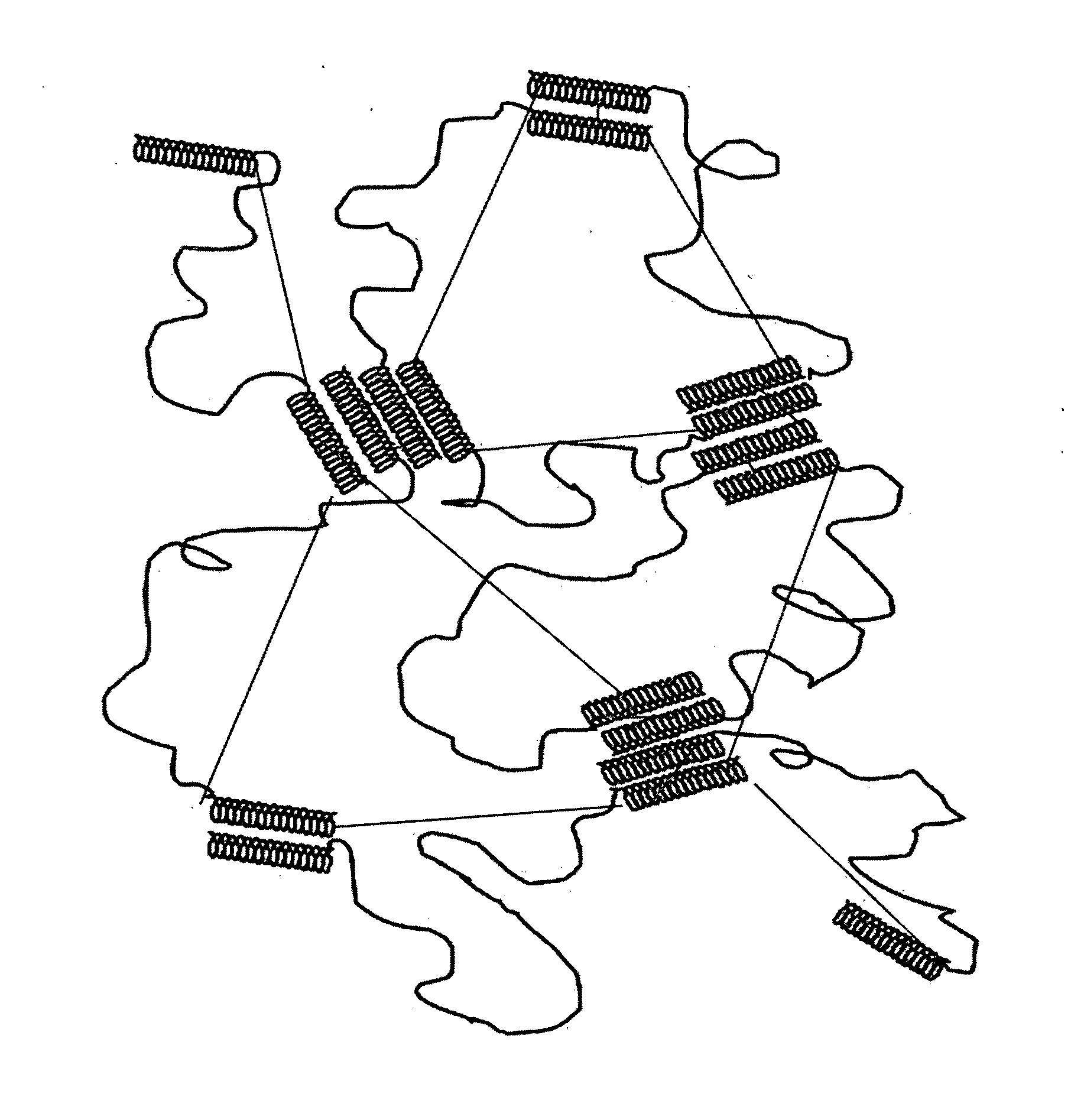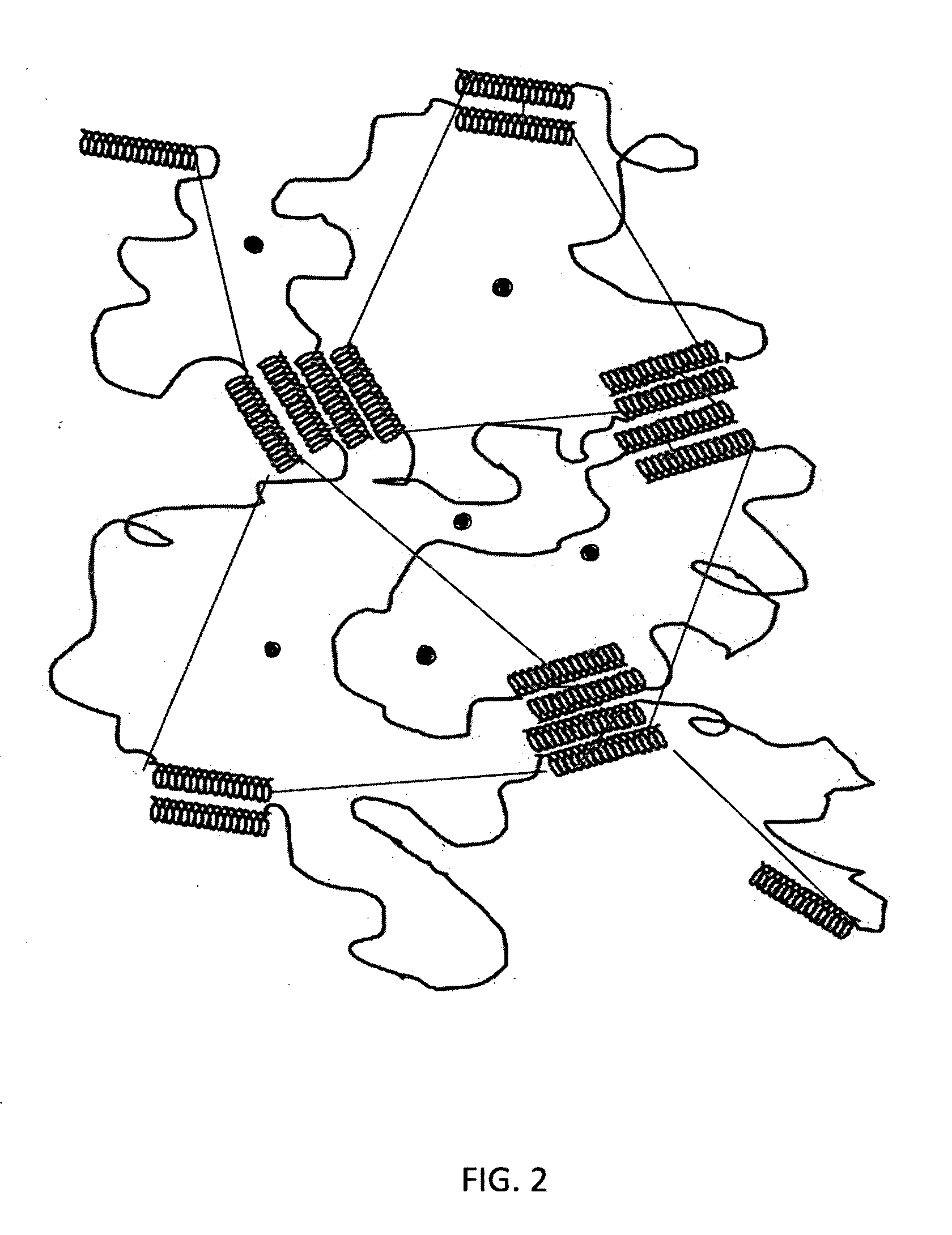Starch-based hydrogel for biomedical applications
- Summary
- Abstract
- Description
- Claims
- Application Information
AI Technical Summary
Benefits of technology
Problems solved by technology
Method used
Image
Examples
example 1
Synthesis of Starch-Based Hydrogels
[0102]A starch-based hydrogel for biomedical applications in accordance with the present invention comprises a biodegradable gel network that is cross-linked by ester linkages which can be degraded hydrolytically. This Example describes the synthesis of exemplary hydrogels in accordance with the present invention, in which alcohol groups on starch derivatives (amylose, amylopectin, or soluble starch) are reacted to form two ester linkages, one on each end of glucaric acid (GA), which is used as a chemical cross-linker.
[0103]Materials. Amylose, amylopectin, and D-saccharic acid potassium salt (also known as glucaric acid potassium salt) and reagent grade soluble starch were purchased from Sigma Aldrich (St. Louis, Mo., USA).
[0104]Synthesis. The starch gel was chemically cross-linked by condensing the —OH groups of the starch, both amylose and amylopectin, with the acid ends of glucaric acid to form two ester linkages. More particularly, the cross-li...
example 2
Methods for Characterizing Starch-Based Hydrogels
[0105]This Example describes methods that are useful for characterizing various aspects of a starch-based hydrogel made in accordance with the invention.
[0106]RAMAN Spectroscopy. RAMAN spectroscopy defines chemical bonds of a sample by taking advantage of the polarizability of compounds within the sample. RAMAN was performed at room temperature using freeze-dried samples of hydrogels synthesized according to the methods described in Example 1.
[0107]Small Angle X-ray Scattering (SAXS). In the SAXS technique, the elastic scattering of
[0108]X-rays (having wavelengths of about 0.1 to 0.2 nm) by a sample having inhomogeneities in the nanometer range, is recorded at very low angles, typically 0.1-10.00. In this angular range, information about the shape and size of macromolecules, characteristic distances of partially ordered materials, and pore sizes are measured. SAXS is capable of delivering structural information regarding macromolecule...
example 3
Characteristics of Starch-Based Hydrogels
[0112]This Example describes the characteristics of a plurality of embodiments of starch-based hydrogels made in accordance with the present invention. In various embodiments, the starch-based hydrogels comprise: amylopectin as the only starch component; amylose as the only starch component; a “starch composite” including both amylopectin and amylose; and amylopectin / amylose starch composites that are cross-linked with varying concentrations of an exemplary cross-linker (glucaric acid, GA).
[0113]Table 1 provides a listing of the samples, and the nomenclature used for each starch-based hydrogel. Three runs per sample (designated by “—1, 2, or 3”) were analyzed.
TABLE 1Sample NomenclatureAbbreviationDefinition5S_15% (wt / v) Amylose Gel in water. 3 Runs5S_2from the same sample.5S_310S_110% (wt / v) Amylose Gels in water. 3 Runs10S_2from the same sample10S_320P_120% (wt / v) Amylopectin Gel in water. 320P_2Runs from the same sample.20P_35S5P_15% (wt / v)...
PUM
| Property | Measurement | Unit |
|---|---|---|
| Fraction | aaaaa | aaaaa |
| Viscosity | aaaaa | aaaaa |
| Solubility (mass) | aaaaa | aaaaa |
Abstract
Description
Claims
Application Information
 Login to View More
Login to View More - R&D
- Intellectual Property
- Life Sciences
- Materials
- Tech Scout
- Unparalleled Data Quality
- Higher Quality Content
- 60% Fewer Hallucinations
Browse by: Latest US Patents, China's latest patents, Technical Efficacy Thesaurus, Application Domain, Technology Topic, Popular Technical Reports.
© 2025 PatSnap. All rights reserved.Legal|Privacy policy|Modern Slavery Act Transparency Statement|Sitemap|About US| Contact US: help@patsnap.com



